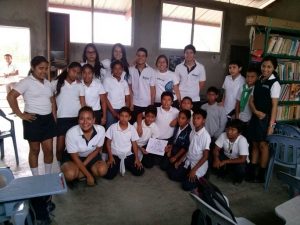When reading about Nao Bustamante’s performance art piece “America, the Beautiful” I was absolutely blown away. I think that incorporating the image of “la rubia” into a performance art piece brilliantly brought to light many of the misogynistic tropes that incorporate blond women in both Mexico and the U.S.
In fact, one of my father’s favorite anecdotes about first dating my mother has to do with this idea of the blond Mexican woman as a fetishized “other”. Apparently, he and my mother were watching a Mexican talk show in the kitchen in mis abuelos’ house in Mexico. My father, being the analytical person he is, asked my mother: “Why is it that they only show white actors on Mexican television when I have barely seen any white Mexicans since living here?” My mother responded, “Well, white Mexicans exist, but what do you think Mexicans look like?” At that moment, the camera pan
ned over the studio audience, and for a brief second the screen was filled with brown bodies. “That!” My father replied, “That’s what Mexicans look like to me.”
So, while my father was immediately aware that it was a little off having the media dominated by white (often blond) Mexicans, his own perception of Mexicans also seemed to be flawed. I think that Bustamente meant to challenge both of these ideas of what a Mexican looks like in this piece; she in fact juxtaposed both ideas of Mexicaness on her own body, oversexualizing herself in a way that could have approximated her to the American Marilyn Monroe ideal (white, blond, and beautiful) as well as the preconceived Mexican ideal (dramatic, dirty, unstable).




